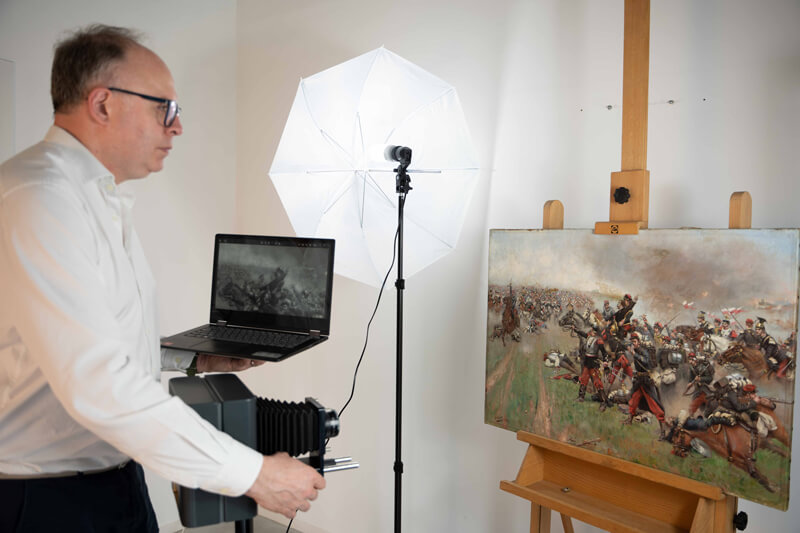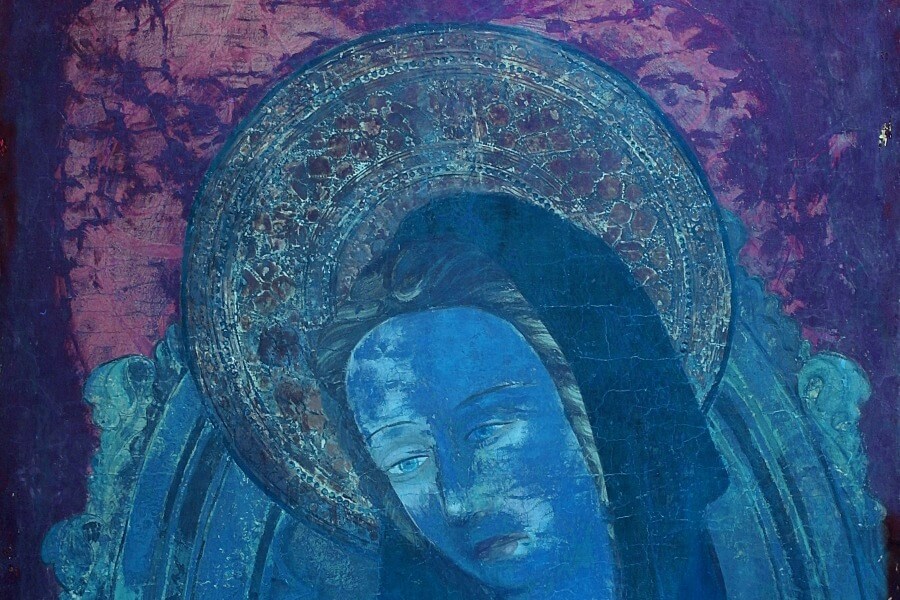
DATING A PAINTING, PAINTING ANALYSIS
The dating of a painting is useful within the framework of an authentication, in the search for a falsification or in the optics of a restoration, conservation. CIRAM laboratories and teams of scientists couple several methods such as carbon 14 dating and imaging techniques to deliver a complete expertise and pronounce on the age of your painting.
A complete expertise of the work
As a world leader in the dating and analysis of works of art, CIRAM intervenes in situ on your paintings with portable methods. From carbon-14 dating of the canvas to the revelation of a hidden signature, our researchers respond to your authentication issues with state-of-the-art technologies.
The utility of dating a painting
The dating of a painting provides answers to several problems.
The carbon-14 dating of the support (canvas, wood, paper) of a painted work is the first step in the authentication process of the CIRAM laboratory. It allows us to verify the chronological compatibility between the support and the period of activity of the painter. It can eventually be used to modify the attribution of a painting.

Characterizing and authenticating a painting
In addition to analyses that allow us to date a painting in relation to the estimation of an era, we can also characterize and analyze pictorial techniques in the laboratory.
Our analyses particularly in imaging allow us to deepen the knowledge of a painting or a picture with:
- A search for signature to define the artist;
- Highlighting of drawings or preparatory work;
- Identification of restoration areas and repentirs;
- Characterization of pigments and binders used.

RESTORING AND PRESERVING A PAINTING IN A WAY THAT RESPECTS ITS CREATION
A rigorous and precise scientific approach
Our dating techniques for a painting
Before beginning the complete study of a painting, it is important to date the support, in order to avoid forgeries or recent copies. Thanks to the carbon 14 dating (or radiocarbon dating) of the canvas, the wood, the paper…, carried out in our laboratories, we will bring an objective chronological information on the period of manufacture of the support.
It is also interesting to carry out a characterization of the pigments and binders in order to inform the palette of colors used by the painter in order to remain faithful and to mask the restoration as much as possible. Thanks to a state-of-the-art imaging method, we are able to deliver a precise expertise within the framework of the restoration of a painting.
Whether it is carbon 14 dating or imaging techniques (grazing light, Ultraviolet – UV, Infrared – IR and radiography etc.), each data is interpreted by doctors in our laboratories.
The scientific analysis of paintings also involves the rigorous study of the data to define a chronology and characterization of the works of art.
The different imaging techniques for a complete analysis
CIRAM laboratories have six imaging techniques at their disposal:
- Natural light;
- Grazing light, allows us to define the state of conservation of the surface of the work, the deformations of the support, the tears, the scratches, the dents;
- Transmitted light, allows to apprehend the possible holes and tears of the canvas, but also to reveal the alterations of the stratigraphy of the pictorial layers;
- Ultraviolet imaging: this method allows to make visible the surface repaints present on the varnish;
- Infrared reflectography: reveals the preparatory drawings as well as a hidden signature;
- X-ray radiography: highlights areas of restoration and gives an idea of the general state of conservation of the painting.
By combining all these scientific imaging techniques, our research teams are able to precisely characterize the entire stratigraphy of a painting.
Chemical analysis as the final step
Scanning electron microscopy (SEM-EDX), Raman spectrometry and infrared spectrometry (in ATR mode or microscopy) will allow us to identify the chemical composition of pigments, fillers and binders. We can also couple a stratigraphic study, in order to determine the composition of the preparatory layers and to characterize the presence of repaints and restorations.
This information finalizes the analysis of a painting and allows us to obtain a global vision of the work, its history and its authenticity.
CIRAM, world leader in dating and analysis of paintings
The dating of a painting addresses several issues. Thanks to our imaging methods, carbon-14 dating and our laboratory teams, we are able to deliver a complete expertise and define the age of a work of art.
CIRAM is a world leader in the dating and analysis of art objects.
> Discover CIRAM’s other areas of expertise:
